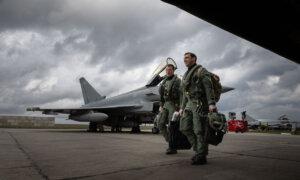While Canadian defence spending is under closer scrutiny as NATO members meet in Washington, D.C., this week, the federal budget watchdog says Canada is expected to fall further short of meeting its commitment to the alliance than expected.
The PBO says defence spending will reach a peak of 1.49 percent of GDP in fiscal year 2025-2026 before falling and stabilizing at 1.42 percent in 2029-2030.
By comparison, the Department of National Defence (DND) said in April new investments announced in Budget 2024 would raise defence spending to 1.76 percent of GDP by 2029-2030.
The PBO released its analysis on the day Prime Minister Justin Trudeau and Defence Minister Bill Blair arrived in the U.S. Capitol for the NATO Summit, which will mark the alliance’s 75th anniversary.
Mr. Blair spoke at a forum in D.C. on July 8, where he was asked about not meeting the NATO target.
“It’s not just a matter of how much you spend, but it’s a matter of spending it well,” Mr. Blair said during a “fireside chat” with journalist Ravi Agrawal of Foreign Policy magazine.
Mr. Blair added that investing in new submarines or continental defence will “inevitably” take Canada over the 2 percent guideline.
The PBO says its forecast differs from DND’s because its projection of major military purchases of equipment is lower.
“Recent experience as well as multiple PBO reports suggest a high likelihood of delays and lapsed appropriations,” says the report.
The budget watchdog also notes DND uses the OECD’s outlook for nominal GDP, in line with NATO, whereas the PBO uses its own GDP outlook, which is says is “broadly similar” to the finance department’s.
NATO members have largely increased defence spending in recent years. Previously, a majority of countries didn’t meet the 2 percent target. Canada is currently among eight countries out of 32 not expected to meet the target in 2024.
Canada’s defence spending to GDP ratio has ebbed and flowed over the last decade. From 1.01 percent in 2014, it reached 1.44 in 2017 before dropping back down to 1.20 in 2022, according to NATO figures.
This includes $18.4 billion to purchase new tactical helicopters and $2.7 billion to acquire long-range missile capabilities.
NATO also has a guideline for the purchase of equipment, which requires member states to allocate at least 20 percent of defence spending to that end. This will be met and exceeded by Canada from fiscal 2025-2026, the PBO says.
Mr. Trudeau is delivering a keynote address at the NATO Climate Change and Security Centre of Excellence on July 9 and will participate in the celebratory event for NATO’s 75th anniversary.
The prime minister is also meeting with leaders in the Senate and U.S. House of Representatives Minority Leader Hakeem Jeffries. Canadian Ambassador to the U.S., Kirsten Hillman, told reporters House Speaker Mike Johnson wasn’t available to meet with Mr. Trudeau.







